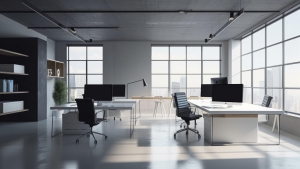please click here:
https://www.shdtimber.com/products.html
Dibetou wood, scientifically known as Lovoa trichilioides, is a tropical hardwood indigenous to West and Central Africa. This prized timber is renowned for its unique coloration, interlocked grain, and versatility in furniture, interior joinery, and decorative applications. Over the years, Dibetou has gained recognition among woodworkers, designers, and architects who value both aesthetics and performance. This guide explores Dibetou wood in depth, covering its physical and mechanical properties, workability, applications, market trends, sustainability, and practical tips for woodworking.
Overview of Dibetou Wood
Dibetou belongs to the Meliaceae family, which also includes species like Mahogany and Sapele. Native to countries including Sierra Leone, Liberia, Côte d'Ivoire, Ghana, Cameroon, and Gabon, Dibetou trees often grow up to 50 meters tall with trunk diameters exceeding 1 meter. The bole is generally straight and cylindrical, making it highly suitable for lumber production. This hardwood's combination of beauty and workability has made it a popular choice in high-end woodworking projects.
Physical Characteristics
Color and Aesthetics
Dibetou wood displays a warm yellow-brown to grey-brown heartwood, often streaked or veined with black. These natural variations provide a striking, ribbon-like visual effect. When quarter-sawn, the wood exhibits a fine silver figure, enhancing its visual appeal in veneers and furniture surfaces. Sapwood is pale, well-demarcated, and less durable than heartwood, making the latter the preferred choice for exposed applications.
Grain, Texture, and Figure
The grain is typically interlocked, creating a ribbon-like or wavy figure. Its fine to medium texture allows for smooth finishes, while the wood's natural luster gives furniture and paneling a luxurious appearance. Some pieces may display subtle figuring variations, which add character to high-end interior applications.
Density and Mechanical Properties
Dibetou has a moderate density, with green wood around 650 kg/m³ and air-dried wood approximately 450 kg/m³ at 12% moisture content. Key mechanical properties include:
-
Janka Hardness: 3,200 N (medium hardness for tropical hardwoods)
-
Modulus of Rupture (MOR): 80–90 MPa
-
Modulus of Elasticity (MOE): 11–12 GPa
-
Shrinkage: Radial 4–5%, Tangential 7–8%
These properties make Dibetou suitable for furniture, interior paneling, and decorative veneers, though careful handling is necessary to avoid splitting along interlocked grain areas.
Odor and Natural Oils
Dibetou wood has a mild, slightly sweet odor when freshly cut. It contains natural oils that enhance workability and provide moderate resistance to dry wood borers. However, it is only moderately resistant to fungal decay, particularly in the sapwood.
Workability
Machining and Tooling
Due to its interlocked grain, Dibetou can present challenges during cutting, planing, or routing. Sharp tools and low-speed machinery are recommended to reduce tear-out. Pre-drilling is advisable for screws or nails to prevent splitting.
Sanding and Finishing
Dibetou sands to a smooth finish and takes stains, oils, and varnishes exceptionally well. Its natural luster can be enhanced with polishing, making it suitable for high-end furniture and decorative applications.
Gluing and Joining
Gluing is generally straightforward, though the presence of natural oils may require surface cleaning or light sanding for optimum adhesion. Standard woodworking adhesives like PVA or epoxy work well. Interlocked grain may necessitate careful clamping to avoid joint misalignment.
Applications of Dibetou Wood
Furniture Making
Dibetou is highly prized in fine furniture manufacturing due to its appealing appearance and moderate hardness. It is ideal for tables, chairs, cabinets, and decorative elements. The interlocked grain and warm tones create a sophisticated aesthetic.
Cabinetry and Interior Joinery
The wood's stability and finish quality make it suitable for cabinets, moldings, and paneling. When properly dried, it resists warping and retains its visual appeal over time.
Flooring
Dibetou's moderate density and resistance to wear make it suitable for low-traffic flooring applications. Its ribbon figure and natural luster enhance interior elegance.
Decorative Veneers
Dibetou is a favorite choice for veneer production, used in wall panels, musical instruments, and luxury furniture. Quarter-sawn slices reveal attractive silver figure patterns.
Specialty Applications
-
Musical Instruments: Some instrument makers use Dibetou for string instrument backs or piano panels.
-
Boat Interiors: Its moderate durability against dry wood borers makes it suitable for non-structural marine interiors.
-
Artisan Craft: Small-scale artisan items, turned bowls, and sculptural pieces benefit from its fine texture.
Comparison with Other Tropical Hardwoods
| Feature | Dibetou (Lovoa trichilioides) | Mahogany (Swietenia spp.) | Sapele (Entandrophragma cylindricum) | Iroko (Milicia excelsa) |
|---|---|---|---|---|
| Color | Yellow-brown to grey-brown | Reddish-brown to dark brown | Reddish-brown with golden hues | Golden brown |
| Grain | Interlocked, ribbon figure | Straight to interlocked | Interlocked, medium texture | Interlocked, coarse |
| Hardness (Janka) | Medium (3,200 N) | Medium (3,500 N) | Medium (3,600 N) | Hard (4,100 N) |
| Durability | Moderate (fungi), durable (borers) | Moderate to high | Moderate to high | High |
| Workability | Moderate; sharp tools needed | Good; easy to machine | Good; easy to machine | Moderate; dense |
| Applications | Furniture, veneers, flooring | Furniture, cabinetry | Furniture, veneers | Flooring, outdoor uses |
This comparison highlights Dibetou's unique aesthetic appeal while positioning it as a versatile alternative to other tropical hardwoods.
Market Trends and Pricing
Dibetou is exported primarily from West and Central Africa, with European and Asian markets being the largest consumers. Pricing depends on grade, thickness, and country of origin. High-quality, quarter-sawn timber or veneer commands premium prices due to its visual appeal.
Supply Considerations
-
Availability: Moderate; overharvesting in certain regions can lead to scarcity.
-
Certifications: FSC or PEFC certifications ensure sustainable harvesting.
-
Import Regulations: Compliance with CITES may apply in certain contexts.
Sustainability and Conservation
Though not currently listed as endangered, Dibetou faces threats from deforestation, illegal logging, and habitat loss. Sustainable practices include:
-
Promoting responsible forestry management
-
Selecting certified lumber
-
Encouraging plantation-grown timber to reduce pressure on wild populations
These practices help preserve the ecological balance while providing a steady supply for woodworking industries.
Tips for Working with Dibetou Wood
-
Moisture Control: Ensure proper drying to avoid shrinkage and warping.
-
Tool Maintenance: Keep tools sharp due to interlocked grain.
-
Finishing: Apply pre-conditioners or sanding sealer for consistent staining.
-
Joining: Use pre-drilling for screws and carefully clamp during glue-ups.
-
Storage: Store in a dry, ventilated environment to prevent mold or decay.
Frequently Asked Questions (FAQs)
1. What distinguishes Dibetou from other hardwoods?
Dibetou is distinguished by its ribbon-like interlocked grain, warm yellow-brown to grey-brown color, and fine silver figure when quarter-sawn.
2. Is Dibetou suitable for outdoor use?
It is moderately durable against fungi but performs best in interior applications. For outdoor use, proper sealing and maintenance are required.
3. How should Dibetou be finished?
It responds well to oils, stains, and varnishes. Sanding and pre-conditioning improve the finish, highlighting the natural figure.
4. Where is Dibetou sourced?
Primarily from West and Central African countries such as Sierra Leone, Liberia, Côte d'Ivoire, Ghana, Cameroon, and Gabon.
5. Is Dibetou environmentally sustainable?
Responsible sourcing through FSC or PEFC-certified suppliers ensures sustainability. Avoid timber from overexploited or illegal logging operations.
6. Can Dibetou be used for musical instruments?
Yes, its density and tonal properties make it suitable for certain instrument components, such as piano panels or guitar backs.
7. How does it compare to Mahogany and Sapele?
While similar in appearance, Dibetou offers unique interlocked grain patterns and coloration, making it visually distinct.
Article Summary
Dibetou wood (Lovoa trichilioides) is a tropical hardwood prized for its yellow-brown to grey-brown coloration, interlocked ribbon-like grain, and fine silver figure. Native to West and Central Africa, it is widely used for furniture, cabinetry, flooring, veneers, and artisan crafts. While moderately durable against fungi, it resists dry wood borers and performs best in interior applications. Sustainable sourcing, proper drying, and careful machining maximize its performance and aesthetic appeal, making Dibetou a versatile, high-value timber for woodworking and design projects.






